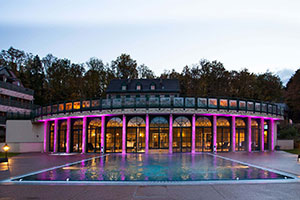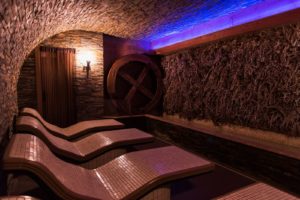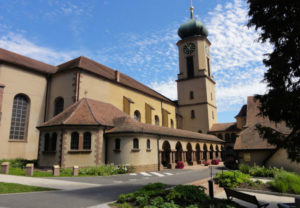
Discover all the “Friends of the Violets” evenings of 2025!
The Hotel and Spa Les Violettes**** invites you to its theme nights every first Thursday of the month! Discover without further delay our program for
Humans all over the world have always known how to use the therapeutic virtues of hot water.
The Greek, Roman, Egyptian, Turkish, Japanese and Nordic cultures have always practiced this form of hot bath taken in common. The ancient Roman baths were vast arenas of water where hundreds of citizens met. The baths were thus places of exchange and social life.

From the 6th century BC, the history of public baths began in Greece with the rise of the practice of physical training. Facilities are then built right next to stadiums and gymnasiums. At first the baths were cold. Indeed, at that time, hot baths had a bad reputation because they were suspected of softening the body, while cold water “hardened the character”. The bath also had the function of allowing relaxation after muscular efforts.
The democratization of the use of oils and sand with which athletes coated themselves to retain perspiration, subsequently justified hot water baths: this is the birth of the first steam baths. Greek bathing establishments were places where people met to indulge in physical exercise, but they could also eat there and discuss politics or philosophy.

The real development of the baths reached its peak with the Romans. Indeed, thanks to the Roman engineers who already mastered many of the principles of hydraulics and water distribution. And water was needed to supply these gigantic thermal baths: capture it, transport it by aqueducts and store it in monumental cisterns.
The Roman baths were free and one could meet there all the social classes of the population. They represented one of the main sources of leisure offered to the citizens of Rome. The Romans went to the baths for personal hygiene and body care, but these places also had an important social function: the baths were an integral part of Roman urban life.
Good to know: the daily water consumption per inhabitant was around 1,000 liters in ancient Rome… compared to around 137 liters in France today!

In Japan, it is estimated that the first hot bath (Onsen) dates back 3000 years. These baths were used by Buddhist monks for medicinal purposes or for purification rites. Wherever there are hot springs, we have seen the practice of bathing in hot water develop: in Iceland, New Zealand, Japan…
There are hot baths dating back to antiquity in Budapest, Nordic baths have existed for centuries in Scandinavian countries in addition to the traditional sauna.
The Orient, on the other hand, combines the hammam, which is a steam bath with hot baths. Since the 18th century, hydrotherapy has developed for therapeutic purposes but also for well-being. This hydrotherapy is the worthy heir to the traditions of hot baths all over the world.
It is said that the “hayurvedic” massage dates back 6000 years! Massages have always been closely associated with baths in order to feel better and improve one’s health. the Greeks, Arabs and Japanese have developed ever more sophisticated massage techniques.

Today spas such as those of “Les Violettes” allow our visitors to enjoy this thousand-year-old tradition. Thanks to the many treatments offered, a stay in this wellness and relaxation area will certainly remain an unforgettable moment of well-being. Also to discover: The salt cave

The Hotel and Spa Les Violettes**** invites you to its theme nights every first Thursday of the month! Discover without further delay our program for

Spa Weekend Alsace : Hotel & Spa Les Violettes Spend a dream weekend in a hotel and spa housed in an exceptional setting in Alsace.

The Basilica of Our Lady of Thierenbach At 355 m altitude, two steps from the hotel “les violettes” and the farm of the monks, stands

Tomi ungerer, godfather of violets Renowned as one of the most talented designers of his generation, since 1957 he has had an international career in

Que faire aux alentours de l’hôtel les violettes ? De nombreux lieux culturels, historiques et de loisirs se situent à proximité de l’hôtel “Les Violettes”

Interview with philippe bosc The interview with Philippe Bosc proposes to discover the career of this self-taught, lover of Alsace, who built his reputation in